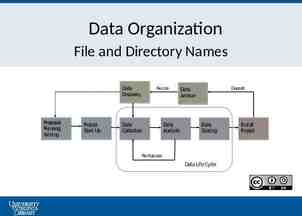Java Program Structure Introduce basic Java program structure.
14 Slides221.00 KB

Java Program Structure Introduce basic Java program structure. James Brucker

Structure of Java source code import java.util.Scanner; import java.time.LocalDate; /** * A simple class. * @author Bill Gates */ public class Greeter { } // ERROR - don't write code here 1. "import" other classes 2. Javadoc comment. Start of the class End of the class

{ } define a "scope" public class Greeter { public static void main( String [] args) { In Java, { . } defines a block of code. You will see { } blocks used in many ways. } } The { and } braces indicate the start and end of the code for this class.

Define a method public class Greeter { public static void methodName( ) { statement1; statement2; statement3; } } method name starts with lowercase scope of method is defined by { . }

main method public class Greeter { public static void main( String[ ] args ) { System.out.print("Who are you?"); statement2; statement3; } } to execute a class as a program, it must have a main method exactly like this

Local Variables public class Greeter { public static void sayHello( ) { String greet "Hello."; System.out.println( greet ); int counter 0; . } public static void main(String[] a) { sayHello( ); // error: counter is not defined here System.out.println(counter); } Local variables are declared inside a method. They only exist while method is executing.

class can have many methods public class Greeter { public static void method1( ) { System.out.print("This is method1"); } public static void method2( ) { System.out.print("This is method2"); } public static void main( String[ ] args ) { method1( ); method2( ); method1( ); // call method1 again } } a class can have many methods, using different names.

3 Kinds of Comments /** * Javadoc comment describes this class. */ public class Greeter { /* A multi-line comment can be very long. */ public static void method1( ) { // a single line comment System.out.print("This is method1"); int n 0; // another comment } } The compiler ignores comments. Javadoc comments create online documentation for your code.

(static) attributes public class Greeter { static String greet "Hello."; public static void sayHello( ) { System.out.println( greet ); . } } A variable defined outside of a method is an attribute of the class. Static attributes can be used in any method, but usually in static methods.

Saving the Program /** Print an impersonal greeting message * @author James Brucker */ public class Greeter { static String greeting "Hello, "; /* execution starts in the main method The header (signature) line must be as shown here. */ public static void main( String [] args) { String who "Human"; // print a message on terminal System.out.println(greeting who); System.out.println( "Goodbye, " who ); } } Filename: Greeter.java The name of the file must be exactly the same as the name of the class in the file, with an Extension ".java" Filename: Bank.java public class Bank { . } WRONG: Filename: bank.java public class Banking { . }

General Program Structure package greeting; import java.util.Scanner; import java.time.LocalTime; /** Print an impersonal greeting message * @author James Brucker */ public class Greeting { public static final Strng GREET "Hello"; private static int counter 0; /** instance variable */ private String name; /** constructor for new objects * @param name is person to greet */ public Greeting ( String name ) { this.name name; } public void greet( ) { System.out.println(GREET name); 1. package name (optional) 2. import statement(s) - may have many. 3. Javadoc comment for class 4. Start of the class Contents of Class: 1. define constants first 2. static variables 3. instance variables 4. constructor(s) - optional 5. methods 6. private methods method names: camelCase

Review In Java, all code must be part of a class. A class begins with the declaration: public class SomeClassName followed by the class definition inside { . } "public" means that this class is visible to other classes. Inside a class, code is contained in methods. A method definition is delimited by { . } This main method is where program execution begins. The main method must have this header line: public static void main( String [ ] args )

Review Inside a method we can define local variables and assign values to them. To define a String variable and assign a value, use: String variableName "some value" ; To display a String on the console, we use: System.out.println( "Are you awake?" );

A Thought Question System.out.println( "What does this mean?" ); Q: What is System ? Q: What is "out" in System.out ? Q: What is "println" in System.out.println(.) ?






